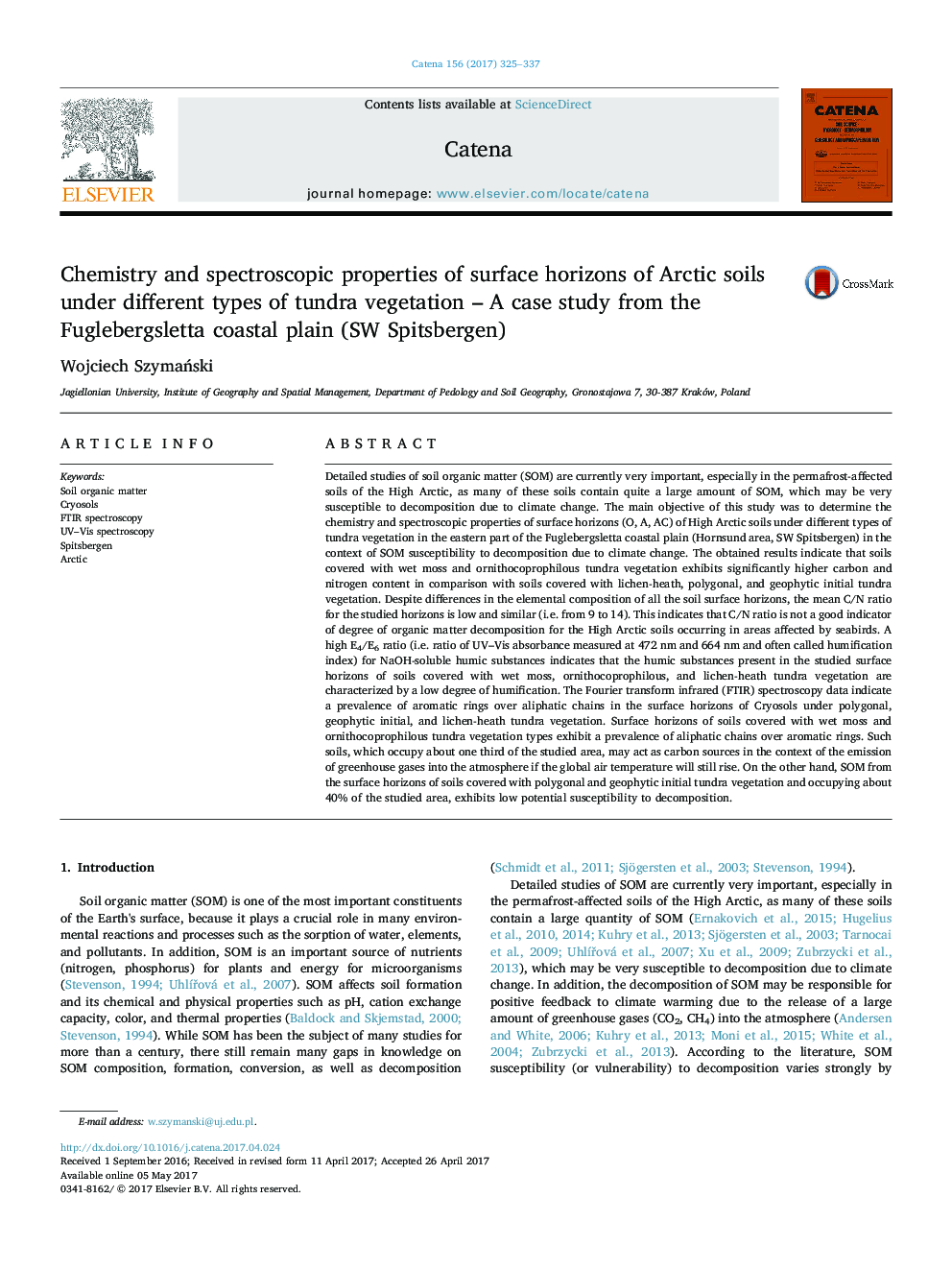| کد مقاله | کد نشریه | سال انتشار | مقاله انگلیسی | نسخه تمام متن |
|---|---|---|---|---|
| 5770008 | 1629198 | 2017 | 13 صفحه PDF | دانلود رایگان |

- Susceptibility of soil organic matter (SOM) to decomposition in Arctic soils was studied.
- Cryosols covered with different types of tundra vegetation were studied.
- Chemistry and spectroscopic properties of surface horizons of Cryosols were determined.
- SOM from O and A horizons of the soils show high susceptibility to decomposition.
Detailed studies of soil organic matter (SOM) are currently very important, especially in the permafrost-affected soils of the High Arctic, as many of these soils contain quite a large amount of SOM, which may be very susceptible to decomposition due to climate change. The main objective of this study was to determine the chemistry and spectroscopic properties of surface horizons (O, A, AC) of High Arctic soils under different types of tundra vegetation in the eastern part of the Fuglebergsletta coastal plain (Hornsund area, SW Spitsbergen) in the context of SOM susceptibility to decomposition due to climate change. The obtained results indicate that soils covered with wet moss and ornithocoprophilous tundra vegetation exhibits significantly higher carbon and nitrogen content in comparison with soils covered with lichen-heath, polygonal, and geophytic initial tundra vegetation. Despite differences in the elemental composition of all the soil surface horizons, the mean C/N ratio for the studied horizons is low and similar (i.e. from 9 to 14). This indicates that C/N ratio is not a good indicator of degree of organic matter decomposition for the High Arctic soils occurring in areas affected by seabirds. A high E4/E6 ratio (i.e. ratio of UV-Vis absorbance measured at 472Â nm and 664Â nm and often called humification index) for NaOH-soluble humic substances indicates that the humic substances present in the studied surface horizons of soils covered with wet moss, ornithocoprophilous, and lichen-heath tundra vegetation are characterized by a low degree of humification. The Fourier transform infrared (FTIR) spectroscopy data indicate a prevalence of aromatic rings over aliphatic chains in the surface horizons of Cryosols under polygonal, geophytic initial, and lichen-heath tundra vegetation. Surface horizons of soils covered with wet moss and ornithocoprophilous tundra vegetation types exhibit a prevalence of aliphatic chains over aromatic rings. Such soils, which occupy about one third of the studied area, may act as carbon sources in the context of the emission of greenhouse gases into the atmosphere if the global air temperature will still rise. On the other hand, SOM from the surface horizons of soils covered with polygonal and geophytic initial tundra vegetation and occupying about 40% of the studied area, exhibits low potential susceptibility to decomposition.
Journal: CATENA - Volume 156, September 2017, Pages 325-337